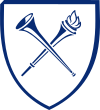Testimonials
Donna Troka
Working with Gabrielle Dudley in the Rose Library completely transformed my teaching and enabled me to develop an innovative course that brought together rich archival materials with contemporary political discourse. Going into the course I knew I wanted to make the archival work integral (we were in the Rose every week doing research) but working with Gabrielle over two semesters really helped me to refine the course and our approach to archival materials. Together, as a team, we were able to empower students to create dynamic public scholarship and begin to understand (and articulate) the long story of the Civil Rights Movement.
Sarah Harsh
Curating their own imagined exhibition allows students to take ownership over our course materials. The instruction archivists at the Rose Library did a wonderful job selecting artifacts that were both directly related to our course themes and artifacts that extended our lines of inquiry into other areas. Watching the excitement on my students' faces as they interact with artifacts at the Rose is always a highlight of my semester! See the assignment here.
Anna Leo
For the past several years, I have designed assignments for my Choreography 1 course (solo dance composition) using the archives as a focal point. These assignments have connected to the Seamus Heaney collection, as well as the Billops-Hatch Archive and African American collections. Ephemera, poems, and documents from the collections act as a creative springboard for choreographically exciting dance compositions. The sessions with the archivists are helpful and enlightening to the students, not only in terms of how to use the archives, which at first may seem confusing and daunting to them, but also in bringing an artist and his or her process to life for them. I watched students light up when permitted to look at objects and documents which the archivists have selected for their viewing--actually seeing the many drafts of Seamus Heaney's 'Strange Fruit,' or the notebooks in which Lucille Clifton drafted her poems, brings the work alive, and creates a visceral connection between the student and the artist who is inspiring them. The Rose Library and the instructional sessions inspire me and my students equally!
Jenny Bledsoe
My first-year writing class on “Medieval Heroes and Monsters” (English 181) included a unit on materially-engaged reading. To prepare the class for a visit to the Rose Library, we practiced reading special collections catalog entries, and students learned what the size, script, and decoration of medieval manuscripts can tell us about a literary work before we even read the text a manuscript contains. At the Rose, we viewed the thirteenth-century Bible owned by the Candler family and many manuscript fragments.
In groups, students examined the physical features of one of the Rose Library’s objects, and we discussed as a group what those features reveal about the original creators and owners. In a written reflection on the experience, Davis Husk (class of 2019, political science major, religion minor) wrote, 'Talking about manuscripts and seeing pictures of them in class is one thing, but to actually be able to touch and feel them is an entirely different and meaningful experience. Actually being able to see the physical product of what we have been studying helped me to bring the circle to an end and close the gaps between theoretical and physical learning.'
After the Rose Library session, students wrote an analysis of the materiality of a medieval manuscript, choosing a digitally available object and creating an online composition explaining the significance of the manuscript’s physical features to a general audience (see the assignment sheet here). I wrote an article about the materially-engaged reading unit in my course and how it helped students develop a more sophisticated understanding of literature, cultural context, and their own writing processes. The article, 'Materially-Engaged Reading in the Writing Classroom,' is forthcoming in Pedagogy: Critical Approaches to Teaching Literature, Language, Composition, and Culture 19 (2019)."
James Morey
I have taken my Chaucer class to the Rose Library for years to view the full-scale, full color facsimile of the Ellesmere manuscript of Chaucer's Canterbury Tales. The facsimile is unbound, in fascicles, so each student can take charge of a slice of one of the most important manuscripts in English literature.
Entire classes can benefit from a visit to Rose, as can the individual student. I had occasion to work with a SIRE student who was trying to find annotations made by Ted Hughes in books on medieval subjects from his personal library. She had mixed success, but along the way she became fascinated by multiple drafts of his poem 'The Hawk in the Rain." That led us to a treasure trove of drafts and doodles, including a poem written on the back of page 27 of a typescript by Hughes's wife, Sylvia Plath. I asked the student what she thought that meant. 'Well,' she replied, 'I bet another box in the collection has a typescript by Sylvia Plath, and it is missing page 27.' She will keep looking. That is what the archives are for."
